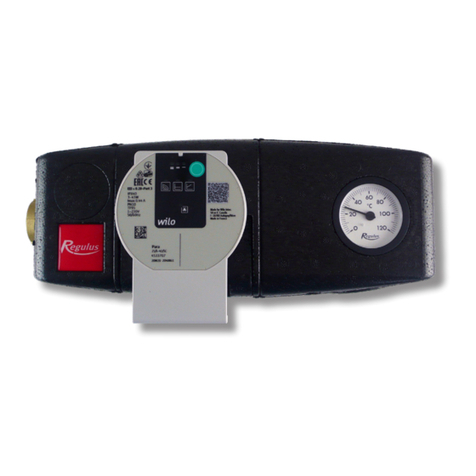SAFETY INFORMATION
The appliance shall be installed by a trained person. The Manual is intended for an informed person.
The contents of this Manual may change over time.
THE APPLIANCE OPERATES WITH VOLTAGE DANGEROUS TO HUMAN LIFE. PLEASE STICK
TO SAFETY INSTRUCTIONS GIVEN IN THIS GUIDE, PREVENTING THUS RISK OF ELECTRIC
SHOCK.
IMPORTANT
Wrong wiring or handling may cause damage to the appliance itself or connected devices!
Prior to beginning with installation and start of the appliance, please read the Manual carefully and
follow the instructions meticulously! These electrical appliances shall be earthed in compliance with the
valid standards. The cross-sections of the power supply cables and their current ratings shall conform
to the nominal current values on the label and to the specification of the appliance as required by a
respective rule valid for low-voltage electric appliances. Prior to installation of this electric appliance
please make sure all safety (circuit breakers and fuses) and switch-off elements are off. Batteries may
only be handled by trained, informed and experienced persons sticking to all applicable safety measures.
Before touching the battery clamps, all safety and switch-off elements at the appliance itself, batteries,
as well as safety and switch-off elements at the electric device outlet shall be switched off!
Do not put any tools, instruments or other, esp. metal items on batteries!
Do not push any objects into the appliance through the ventilation or other openings!
Use a damp cloth to clean the casing. Take care not to let moisture or water into the appliance through
the ventilation or other openings!
The appliance shall be installed in a sufficiently spacious and ventilated room enabling good access. It
shall never be exposed to weather!
Whenever handling a battery and PG 600 S, the PG 600 S shall be turned off and disconnected from
the power supply.
PG 600 S is not designed for use with an automotive battery.
The backup time depends on the power drawn by the device(s) connected to the PG 600 S. The higher
is the connected load, the shorter is the backup time.
PLEASE RESPECT THE FOLLOWING INSTRUCTIONS
The appliance may be installed by authorized staff only!
When switching off the electric appliance fed by PG 600 S do not forget to switch off the PG 600 S itself
as well. Otherwise the its inverter continues to supply electricity from its battery and does not switch off
until the battery voltage drops below the set min. value.
Even if the appliance is turned off, the battery voltage is still present at the clamps.
No terminal of the unit’s outlet socket shall get connected to any lead of mains or any other electric
wiring. The unit is designed for a closed circuit. If the unit’s outlet got connected with the mains, there
would be a danger of destroying the connected appliances, the unit itself, and even causing harm to
health and property. The only lead that may be connected outside TN-S network is the protective
yellow-green lead.
When testing the backup function, never unplug PG 600 S from el. socket. Doing so would interrupt the
PE line. De-energizing shall be done by a circuit breaker or a fuse.
PG 600 S shall always be used with the battery connected.
Do not leave the appliance turned off for more than 6 months unless its batteries had been fully charged.
The appliance should be completely cleaned by a serviceperson at least twice a year. Cooling is
hindered by dust inside and the appliance might suffer damage from overheating.
Check annually that the battery terminals are properly tightened.
3






























